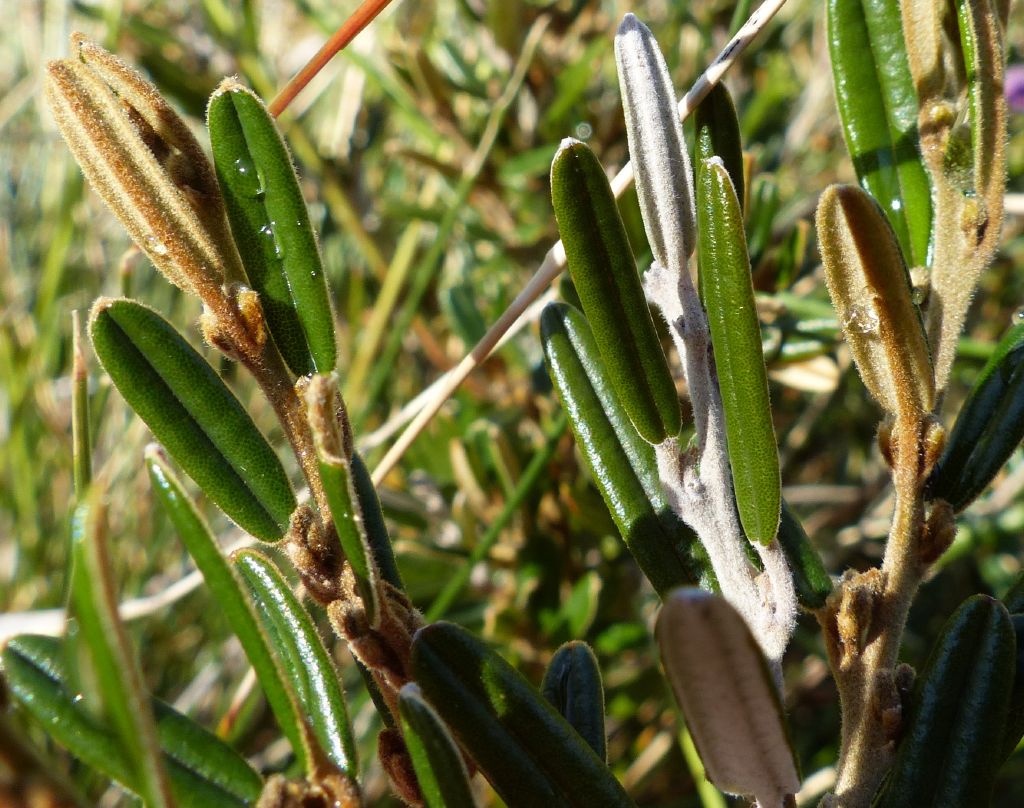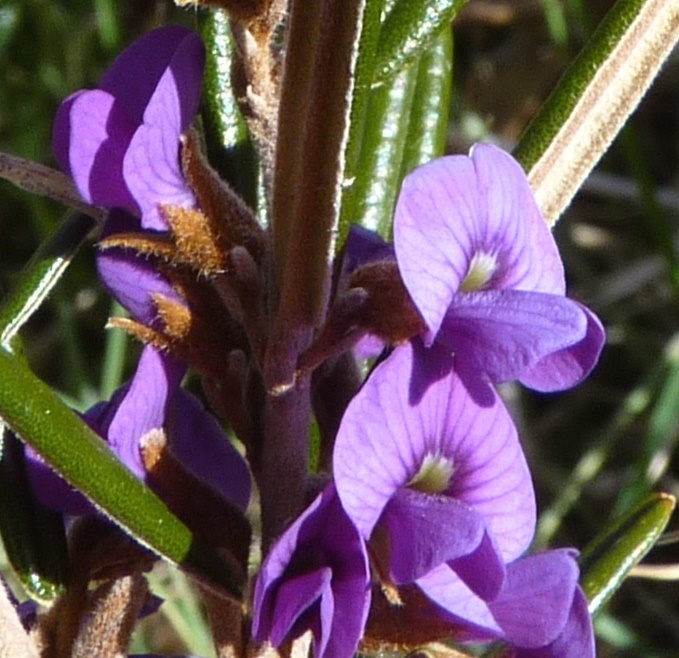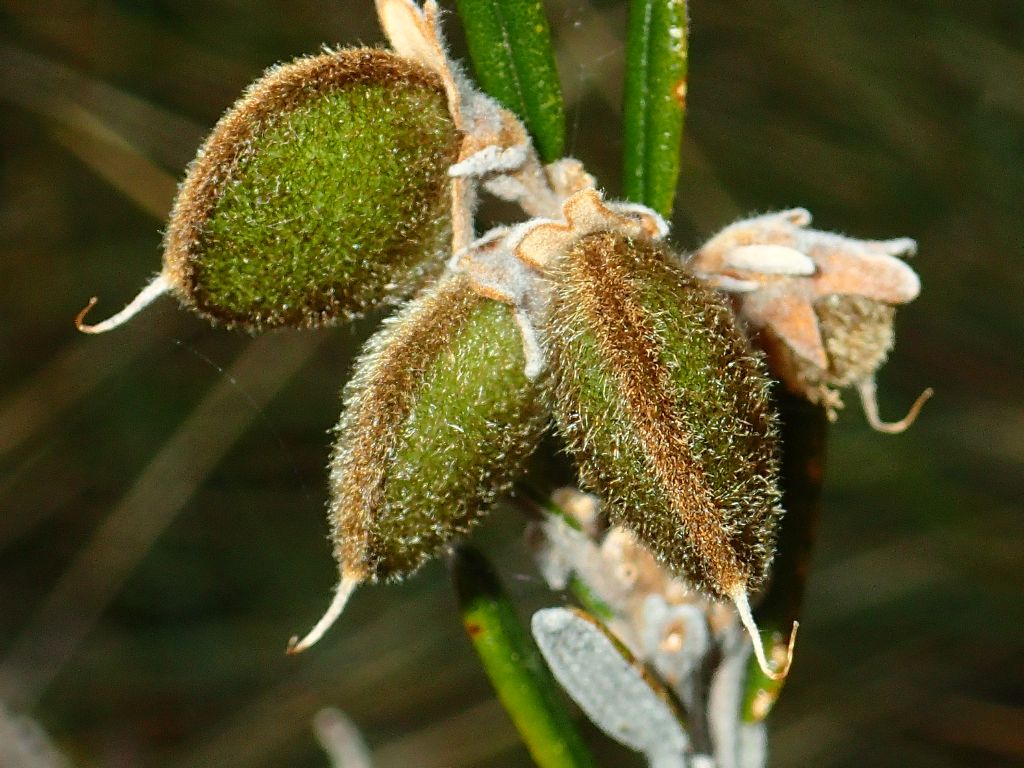Low, spreading shrub growing to 15 - 50 cm high and 1 - 1.5 m in diameter.
Stems and branches are densely arranged and covered in small hairs. The hairs are white-grey or brown/tan towards the tip of the branchlets.
Leaves
The leaves are narrow-oblong in shape and between 1 - 3.2 cm long and 3 - 7 mm wide. The bases are round and the edges of the leaf are bent downwards. The upper leaf surfaces are green, nearly glossy, hairless and smooth with obvious veins. The lower leaf surfaces are covered with cream, pale tan or orange-tan hairs that become white or grey with age. The leaf stalks are between 2.5 - 3.7 mm long.
Flowers
Flowering occurs between October and December. Pea-like flowers have petals that are deep mauve in colour. The flowering parts of the alpine rusty-pods are stalkless and usually 2-flowered. The flower stalks are between 2 - 5 mm long.
Fruits/Seeds
The fruits of the alpine rusty-pod consist of a pod that is broad in profile and approximately 10 mm long. The outer surfaces are covered in a golden-brown mat of hairs. The seeds are approximately 4 mm long, 1.8 mm wide, and blackish.
Field Guide
Improve your identification skills. Download your Alpine Rusty-pods field guide here!




